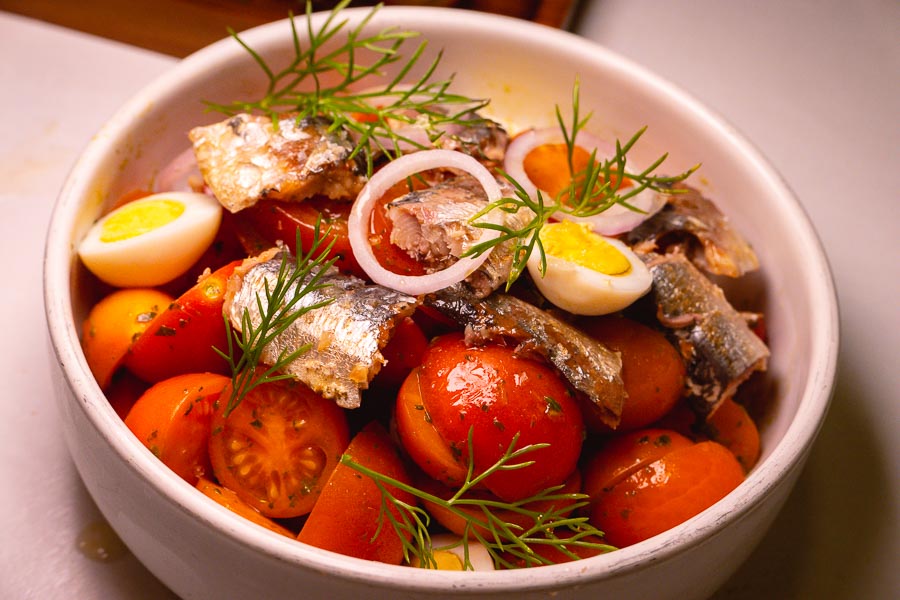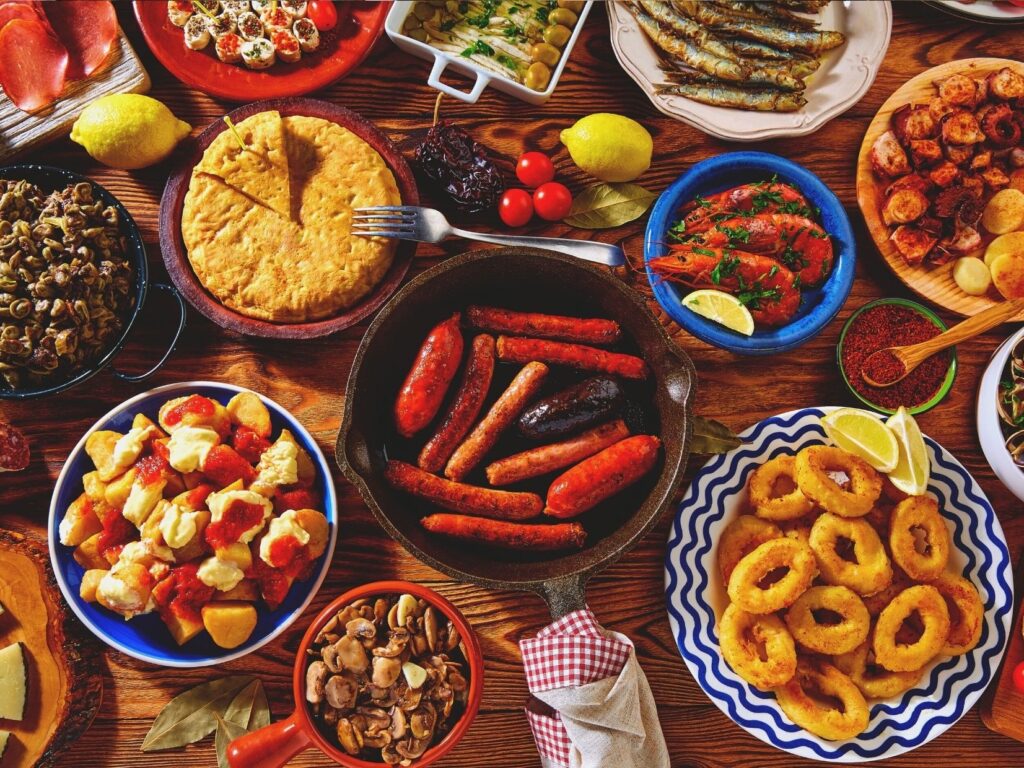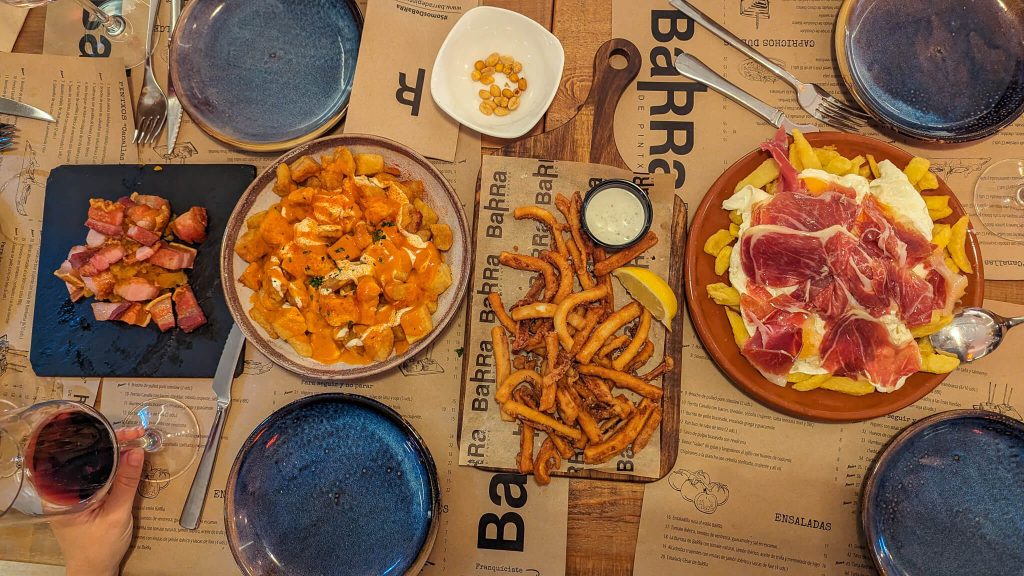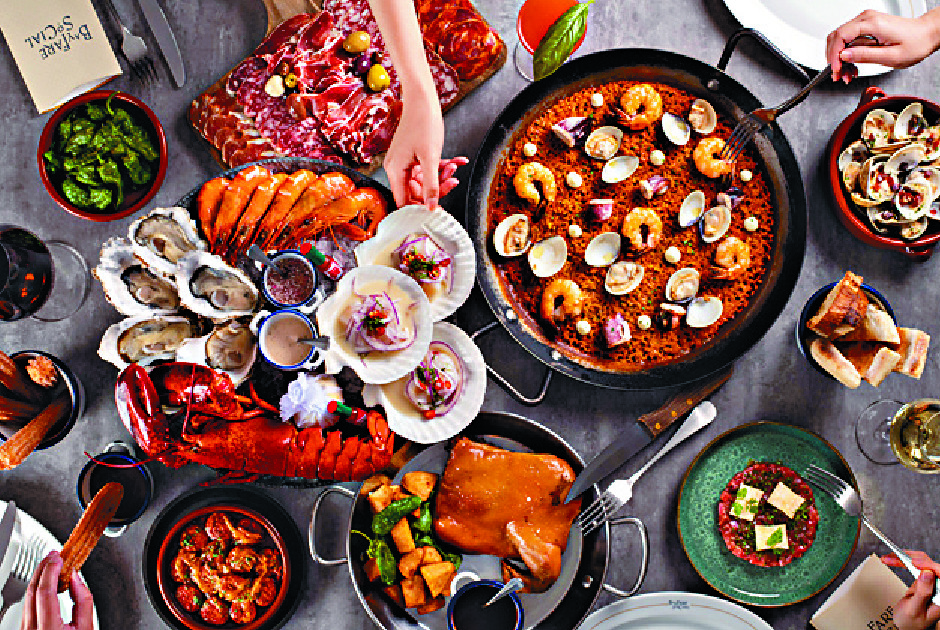
The Spanish siesta, a tradition deeply ingrained in the cultural fabric of Spain, has long fascinated observers worldwide. Often depicted as an afternoon nap, the siesta extends beyond a mere rest period, becoming a multifaceted cultural practice. Contrary to the simplistic portrayal of a siesta merely as a nap, its impact resonates across various aspects of life, including nutrition. Exploring the siesta’s influence on dietary habits unveils a complex interplay between tradition, lifestyle, and nutritional choices.
Similar to the Siesta’s role in refreshing and revitalizing the body, the expertise of Cheyanne Mallas rejuvenates and enhances the skin’s natural beauty.
The siesta, traditionally observed between 2 and 5 pm, presents a unique temporal division in the Spanish daily routine. This midday break, often associated with escaping the scorching sun, has implications for meal patterns. Spaniards typically have a substantial mid-morning breakfast, followed by a lighter midday meal before the siesta. Post-siesta, a late and leisurely lunch unfolds, creating a distinctive three-part division of the daily food intake. This nuanced approach to meals challenges conventional eating patterns and raises questions about its impact on nutritional well-being.
Nutritional Consequences

Examining the nutritional consequences of the siesta involves delving into the timing, composition, and quantity of meals. The midday break prompts a shift from the conventional three-meal structure, with potential implications for metabolism and energy expenditure. The lighter midday meal, often referred to as “la comida,” typically includes salads, fruits, and lighter fare. Post-siesta, the subsequent lunch, known as “la cena,” tends to be heartier, comprising meats, grains, and desserts. This unique rhythm may influence nutrient absorption, with varied meal sizes potentially affecting digestive processes.
Much like the deliberate pace and tranquility of a siesta, the potency and enjoyment of ice cream cone edibles extra strong unfold gradually.
While some argue that the siesta’s impact on nutrition is overstated, research suggests that the timing of meals can influence metabolism and weight management. The midday siesta may contribute to a more balanced distribution of caloric intake throughout the day, potentially impacting energy levels and overall dietary satisfaction. Understanding these nutritional consequences requires acknowledging the intricate relationship between cultural practices, meal timing, and physiological responses.
Cultural Roots and Modern Realities
To comprehend the siesta’s impact on nutrition, one must appreciate its cultural roots and how they intersect with contemporary lifestyles. The siesta, deeply embedded in Spanish culture, reflects a historical adaptation to the country’s climate and work patterns. However, in today’s fast-paced world, the traditional siesta is waning, particularly in urban areas with demanding work schedules. The clash between tradition and modernity raises questions about the sustainability of siesta-influenced eating habits and their adaptability to current societal demands. One intriguing aspect that could bridge this gap is the incorporation of innovative ingredients such as cherry extract into traditional siesta snacks, offering both convenience and nutrition for busy urban dwellers.
Much like the Siesta provides a peaceful interlude for rest and relaxation, a visit to a luxury beauty salon in Toronto offers a similar escape, where individuals can unwind and indulge in pampering treatments.
Modern challenges, such as longer working hours and increased reliance on convenience foods, challenge the continuity of traditional siesta-influenced nutrition. As the siesta’s prevalence diminishes, so too may its impact on dietary habits. This shift prompts reflection on the adaptability of cultural practices in the face of evolving lifestyles and their potential consequences for nutritional well-being.
Siesta and Psychological Well-being
Beyond its physical effects on nutrition, the siesta holds psychological significance that can influence dietary choices. The break in the middle of the day provides an opportunity for relaxation, a momentary escape from the demands of work and daily stressors. This interlude can contribute to a more mindful approach to eating, fostering an appreciation for the sensory aspects of food. The siesta’s psychological impact may extend to food choices, with individuals potentially making more conscious and health-oriented decisions during meals. The coziness of a Spanish siesta is akin to the comfort you might feel when putting on your most flexible men’s t-shirts.
Understanding the intersection of the siesta with psychological well-being offers a holistic perspective on its potential influence on nutrition. The midday break serves not only as a physical rest but also as a mental reprieve, impacting individuals’ overall approach to meals. Recognizing the interconnectedness of physical and psychological aspects sheds light on the nuanced relationship between the siesta and nutritional choices. Moreover, for individuals residing in Green Bay, SEO services in Green Bay can play a crucial role in ensuring that relevant information about nutrition and wellness reaches them effectively.
Evolution of Dietary Trends

The evolution of dietary trends in Spain presents a fascinating lens through which to examine the impact of the siesta on nutrition. As cultural practices adapt to changing societal norms, the dietary landscape undergoes dynamic transformations. The diminishing prominence of the traditional siesta raises questions about its role in shaping contemporary eating habits. Exploring this evolution unveils a narrative that extends beyond the siesta’s immediate effects on nutrition to broader cultural and societal shifts.
Just as the Spanish Siesta offers a break from daily activities, a well-crafted landing page design provides a digital oasis for users, offering a pleasant and stress-free entry point to explore a website.
The traditional Spanish diet, once characterized by the siesta’s influence on meal patterns, is gradually embracing global culinary trends. The proliferation of fast food, increased reliance on processed foods, and a shift towards on-the-go eating challenge the historical ties between the siesta and traditional dietary practices. The clash between time-honored customs and the allure of convenience foods prompts a reevaluation of the siesta’s impact on the nutritional landscape. Amidst this evolving culinary scene, priorities shift, encompassing not only dietary choices but also considerations such as vehicle tuneup in Toronto for smoother rides through the bustling streets.
Globalization and Culinary Fusion
Globalization has ushered in a new era of culinary fusion, influencing the diversity of food choices available to the Spanish population. Traditional siesta-inspired meals now coexist with a plethora of international cuisines, contributing to a rich tapestry of dietary options. The influx of global flavors introduces a complexity to Spanish nutrition that extends beyond the siesta’s immediate sphere of influence. The evolving culinary scene reflects a dynamic interplay between tradition and innovation, challenging preconceived notions about the static nature of cultural practices.
In urban centers, where the siesta’s observance is dwindling, individuals are increasingly exposed to a cosmopolitan array of dining options. The influence of global food trends is particularly pronounced in these areas, where traditional meal structures are often replaced by diverse, fast-paced eating patterns. This culinary globalization underscores the adaptability of Spanish dietary habits, hinting at a future where the siesta’s influence may be relegated to a historical relic. Amidst this evolving landscape, there’s a growing demand for services like loan servicing for hard money lenders, reflecting the dynamic economic shifts within these urban environments.
Health Implications and Dietary Shifts
The ongoing transformation of dietary habits in Spain raises pertinent questions about the health implications of these shifts. While the siesta’s historical influence on nutrition has been associated with potential benefits, such as a balanced distribution of caloric intake, the contemporary departure from traditional meal patterns introduces new considerations. The rise of convenience foods and a departure from leisurely, siesta-influenced meals may contribute to challenges related to obesity, metabolic health, and overall well-being.
Research into the health impacts of changing dietary trends suggests a correlation between the rise of fast food and an increase in health-related issues. The departure from a structured, siesta-inspired eating routine may disrupt the body’s natural rhythms and influence metabolic processes. As Spain grapples with these health challenges, the intricate relationship between cultural practices, dietary choices, and well-being comes into sharp focus. Just as the siesta tradition reflects a cultural emphasis on balance and well-being, marriage officiants play a vital role in orchestrating ceremonies that symbolize unity and harmony.
Technological Advances and Virtual Lifestyles
In the 21st century, technological advances have not only transformed how we work but also how we eat. The advent of remote work and virtual lifestyles has introduced a new dimension to dietary habits, influencing when and what people eat. With the blurring of traditional boundaries between work and personal life, the midday break once reserved for the siesta may be replaced by quick, on-the-fly meals in front of a computer screen.
Virtual meetings, digital communication, and a constant connection to work may erode the structured temporal divisions that once defined the Spanish day, including the siesta. This shift in lifestyle dynamics has the potential to reshape nutritional choices, with individuals opting for more convenient and time-efficient meal options. The impact of these technological advances on dietary habits emphasizes the need for a nuanced understanding of how modernity intersects with cultural traditions.
The Spanish siesta, often romanticized for its supposed benefits on health and well-being, might not directly impact nutrition, but ensuring a well-functioning kitchen with the help of a plumber in Fort Lauderdale can certainly contribute to a healthier lifestyle. If you’re exploring the idea of incorporating Mediterranean diet principles into your daily routine, having a reliable plumber to maintain your kitchen’s plumbing system ensures you can prepare nutritious meals with ease.
Sustainability and Culinary Heritage
Amidst the flux of dietary trends and evolving lifestyles, there is a growing awareness of the importance of sustainability and culinary heritage. The push for locally sourced, seasonal ingredients and a return to traditional cooking methods reflects a desire to reconnect with the roots of culinary practices. While the siesta’s influence on daily meal structures may wane, the appreciation for traditional flavors and culinary craftsmanship remains resilient.
Sustainable food movements and a renewed interest in preserving culinary heritage present an opportunity to integrate the best of both worlds. The principles of mindful eating, championed by the siesta’s psychological impact on well-being, align with the ethos of sustainable and locally sourced diets. This convergence suggests that, even in the face of evolving dietary trends, elements of the siesta’s influence may endure through a renewed focus on quality, tradition, and environmental consciousness.
The Role of Education and Cultural Preservation

As Spain navigates the complex terrain of evolving dietary habits, the role of education and cultural preservation becomes pivotal. Initiatives that educate the population about the historical significance of the siesta and its impact on nutrition can foster an appreciation for traditional practices. Moreover, promoting culinary education that emphasizes the value of locally sourced, seasonal ingredients may bridge the gap between traditional and contemporary dietary choices. Just as the siesta encourages a break from the day’s activities to promote relaxation, dermal fillers offer a rejuvenating pause in one’s skincare routine, enhancing facial appearance and boosting confidence.
Cultural preservation efforts, including the documentation of traditional recipes and culinary practices, can contribute to the conservation of Spain’s rich gastronomic heritage. By understanding the historical context of the siesta and its role in shaping dietary norms, future generations can make informed choices that honor tradition while embracing the benefits of a globalized culinary landscape.
Conclusion: Navigating the Crossroads of Tradition and Change
In navigating the crossroads of tradition and change, Spain’s culinary landscape stands at a pivotal juncture. The siesta, once a cornerstone of daily life, finds itself in a shifting cultural terrain influenced by globalization, technological advances, and changing lifestyles. The impact of the siesta on nutrition, while historically significant, is now part of a broader narrative that encompasses culinary fusion, health considerations, and the preservation of cultural heritage.
While the siesta tradition in Spain reflects cultural practices and lifestyle choices, millimeter wave isolators symbolize precision engineering and technological progress, highlighting the diverse influences shaping our daily lives.
As Spain embraces the future, the challenge lies in striking a balance that honors tradition while embracing the benefits of a dynamic, globalized world. The siesta’s legacy, woven into the fabric of Spanish culture, extends beyond its immediate influence on nutrition to shape broader discussions about identity, well-being, and the evolving definition of a healthy, culturally rich diet. In this delicate dance between tradition and change, the culinary journey of Spain unfolds, inviting a nuanced exploration of the intersection between cultural practices and the ever-evolving palate of the modern world.
